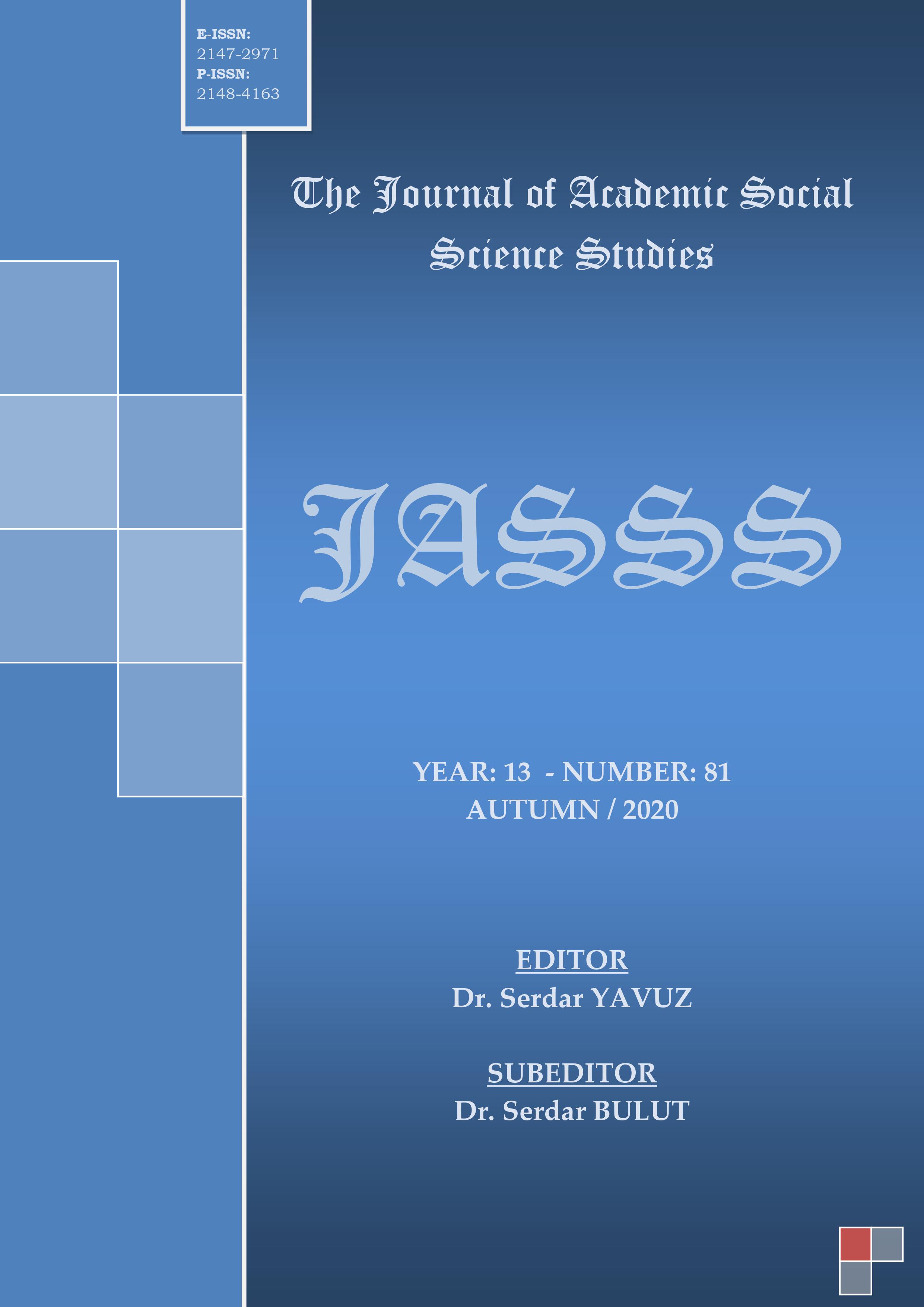KUR’ÂN ÂYETLERİ IŞIĞINDA “SES” KAVRAMI VE SES ANLAMINI İFADE EDEN BAZI KELİMELERİN TESPİTİ VE İNCELENMESİ
Author :
Abstract
Arapça ’da“ses” kelimesinin karşılığı olarak en yaygın anlamda kullanılan kelime, “savt” (صَوْت) sözcüğüdür.Bu makalede “ses” “صوت” kavramı ve “ses” kavramının anlamını ifade eden bazı kelime ve kavramlar ele alınacaktır. Kur’ân-ı Kerim’de “ses” kavramının ne şekilde işlendiğini bilmek büyük önem arz etmektedir. Bu kelime ve kavramların insan psikolojisi üzerindeki tesirlerine Kur’an’ın bakış açısının ne olduğunu ve bu kavramları, müfessirlerce yapılan çeşitli açıklamalar çerçevesinde inceleyeceğiz. Tespit ettiğimiz kadarıyla Kur’ân-ı Kerim’de, öne çıkan bazı ses kavramları: “savt”, “sayha”, “nida”, “hems”, “kavl”, “saika”, “sahha”, “karia”, “emir”, “muhaseme”, “mükâleme”, “terennüm”, “hacce”, “necva”, “nutuk”, “lafız”, “dua”, “tazarru”, “ezan”, “sûr”, “nâkûr”, “dabha”, “zikr”, “tilavet”, “karınca sesi”, “kuşların sesi” “vahiy sesi”, “meleklerin sesi”, “cinlerin sesi”, “şeytanın sesi”, “cennet sesi”, “cehennem sesi”, “kadın sesi”, “müzik ve çalgı sesi”, ve “hamir” (Eşek) sesi olarak geçmektedir. Bu kavramların hepsini bir makalenin sınırları içerisinde detaylı olarak incelemek mümkün olmadığından, biz bu makalemizde, “savt”, “sayha”, “nida”, “hems”, “saika”, “emir”, “terennüm”, “dua”, “tazarru”, “ezan”, “vahiy sesi”, “sûr”, “nakûr”, “dabha”, “karınca sesi”, “kuşların sesi”, “kadın sesi”, “müzik ve çalgı sesi”, ve “hamir” (eşek) sesi olmak üzere ondokuz başlıktan ibaret belirli kelime ve kavramları incelemeyi uygun gördük. Bu çalışmamızda bu kavramların sözlük ve terim anlamlarının yanısıra bu kavramları, klasik Kur’an tefsirlerinden elde edilen veriler çerçevesinde araştıracağız.
Keywords
Abstract
As equivalent to term “sound”, the word used the most commonly in Arabic is the word “savt”. In this article, the concept “sound” “صوت” and some terms and words expressing the meaning of the concept of “sound” will be discussed. It is of great importance to know how the concept of “sound” is handled in the Quran. We will examine these concepts and what is Qur’an’s point of view towards the effects of these words and concepts on human psychology within the framework of various explanations made by the commentators. As far as we have determined, some prominent sound terms in the Quran are mentioned as: “sawt”, “sayhah”, “nida”, “hams”, “Qavl”, “saeiqa”, “sakha”, “Qaria”, “amr”, “mukhasima”, “mukâlama”, “tarannum”, “hajah”, “najwa”, “nataq”, “lafz”, “duea”, “tadarae”, “azan”, “sûr”, “naqur”, “ dabha ”, “dhikr”, “tilawa”, “ant sound”, “bird sound”, “revelation sound”, “the sound of the Angels”, “the sound of the Jinnis”, “the sound of the Satan”, “the sound of Heaven”, “the sound of Hell”, “Woman sound”, “the sound of Music and Instrument”, and “the sound of Himar(Donkey)”.Since it is not possible to examine all of these terms in detail within the boundaries of an article, we found it appropriate to examine certain words and concepts in our article consisting of nineteen titles, including “sawt”, “sayhah”, “nida”, “hams”, “saeiqa”, “amr”, “tarannum”, “duea”, “tadarae”, “azan”, “sûr”, “naqur”, “ dabha ”, “ant sound”, “bird sound”, “revelation sound”, “woman sound”, “the sound of Music and Instrument”, and “the sound of Himar(Donkey)”. In this study, we will investigate these concepts in the framework of the data obtained from the classical Quran interpretations as well as the lexical and word meanings of these concepts.
Keywords
- Abdulbaki, M. F. (1945).el-Muemu’l-Müfehres, li Elfâzı’l-Kur’âni’l-Kerîm,Beyrut: Daru’l-Kutubi’l-Mısriyye.
- Abdulbaki, M. F. (1945).el-Muemu’l-Müfehres, li Elfâzı’l-Kur’âni’l-Kerîm,Beyrut: Daru’l-Kutubi’l-Mısriyye.Beğâvî, B. (h.1409). Tefsiru’l-Beğavî-Meʻâlimu’t-Tenzil, Riyad: Dâru’t-Tayyibe.
- Çetin, A. (1998). “Kur’an Kıratında Musikinin Yeri”, Bursa: Uludağ Üniversitesi İlahiyat Fakültesi, (7). Çimen, A. E. (2007). Niçin Helak, Oldular, İzmir: Işık Akademi, Yay.
- Eflaki, A. (1959). Ariflerin Menkıbeleri, (Çev: Tahsin Yazıcı), I, Ankara: MEB Yayınları. Es-Seyyıd, E. (h. 1300). İanet’t Talibin,Mısır: Daru Kutubu’l-Arabiyye.
- Kurtubî, M. (h.1427). el-Camiû li Ahkâmi’l-Kur’ân, Beyrut: Dâru’l-Kutubi’l-Mısriyye.. Mustafa, İ. (1960).el-mu ̒cemi’l-vasit,(Yayınevi ve Yeri Yok).
- Mutçalı, S. (2011). el Mu ̒cemu’l Arabiyyi’l Hadis, İstanbul: Dağarcık Yayınları. Razî, F. ( h.1401). Mefatihu’l Ğayb,Beyrut: Daru’l Fikr.
